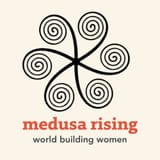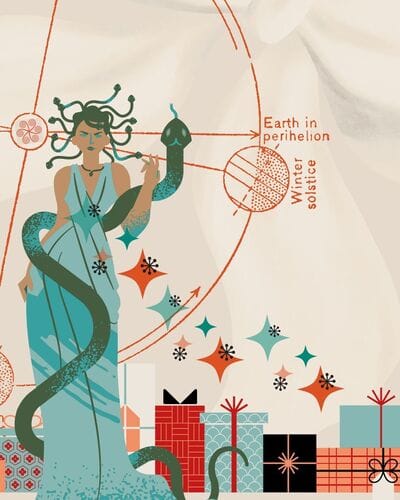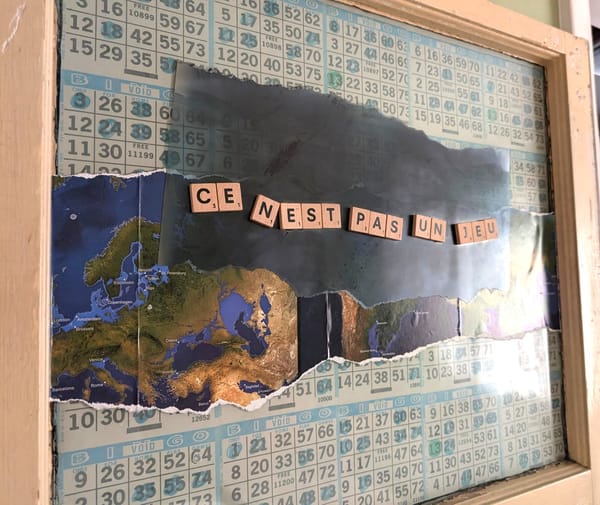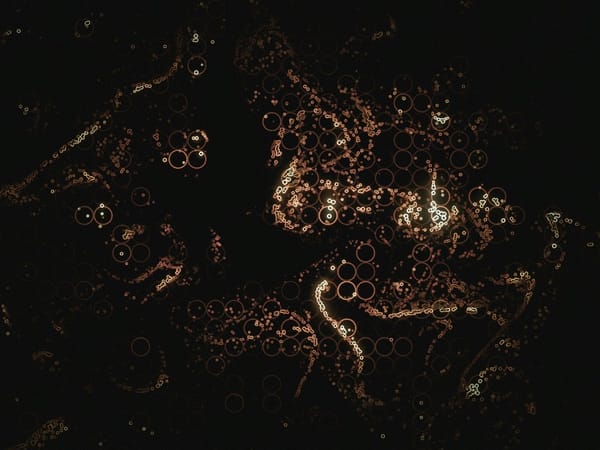The Crone’s Tarot: A Materialist Feminist’s Menopausal Adventure | by Dr V L McMahon
"An old woman’s lack of regular intercourse might mean that poisonous gas would build up in the womb and dissipate through bodily orifices, such as generating deadly eye beams to emanate and blind others."
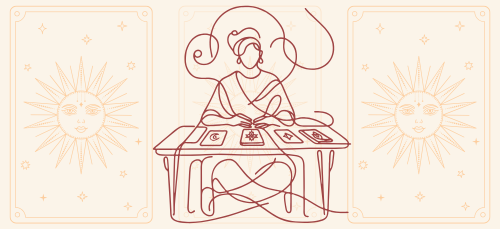
The Origins of the Shakespeare Menopause Project
Twelve years ago, I decided to realise a lifetime’s obsession by writing a book — an academic book, to be precise. I knew that it would take at least a decade of research conducted piecemeal in those scarce and precious moments outside of raising a family and working a demanding fulltime job (not in academe). I knew that I could make it happen: I don’t like to be told ‘‘you can’t.’’ When people dubiously asked me what it would be about, I told them that it would be a book that would explore menopause through the eyes of five of Shakespeare’s tragic female characters. I managed to pitch my idea to a reputable academic press but one of the anonymous peer reviewers made no bones about the fact that he thought (and I’m sure it was a male) that my thesis was rubbish. “Women didn’t have menopause in Shakespeare’s time,” he said, regardless of the fact that I had documented hundreds of pages of medio-historical, classical, literary, mythological, religious and socio-cultural evidence to argue that they, of course, did. Although history had not yet given it a medical term and women themselves were yet to write of their own bodily experiences (that would come later in history), females did experience physiological and psychological changes that came with an ageing body. This is what I call the ‘proto-menopause.’
I argue that, at its core, the ageing woman troubled the sociocultural order because her value to the community became ambiguous once her reproductive abilities had come to an end. She was viewed as a drain on precious community resources and feared for her tendency to speak her mind – especially if widowed or unmarried. This fear and ambivalence were ‘read’ through her body itself. As ‘woman’ in the early modern period was defined by her womb, uterine changes were invariably read as pathological, and these ‘diseases’ fed into and bolstered archetypes about the old woman that had existed since classical times. For instance, the womb was said to crave semen as a sweet treat to keep it from escaping the body proper to cause harm to others. An old woman’s lack of regular intercourse might mean that poisonous gas would build up in the womb and dissipate through bodily orifices, such as generating deadly eye beams to emanate and blind others. This also resulted in the idea of the vampiric nocturnal witch – the nightmare – who would use spells to hypnotise young men so that she could suck their blood and seminal fluid. The ageing woman’s uterus was believed to spontaneously generate monsters, snakes, worms, stones, vermin and terrifying lumps of living flesh called ‘moles’. The origins of the archetypal Witch, oversexed Crone, Gorgon, Gossip, Scold, Hag, and Harpy stemmed from a very real belief that a woman’s ageing body was the dangerous etiological site of disease, contagion, malefic magic, and environmental catastrophe. These archetypes of the ageing female body had very real, often fatal implications for the woman herself. An ageing woman could have her body beaten, branded, mutilated, driven from her home into penury and starvation, pelted in stocks, forced to wear torturous implements, dunked in rivers, hanged, or burned alive. It is no accident that the vast majority of women condemned as witches in Europe were older post-menopausal women. In other words, our ongoing revulsion of the older woman’s body and sexuality has its origins deep within the history of folklore, mythology, natural philosophy, religion, and the medical profession. Shakespeare was simply drawing on his knowledge of this ancient tradition of viewing the older woman and her body as being demonic, unnatural, disease-ridden, and dangerous.
On the basis of that singular peer review, even though the two others had been enthusiastic and accepting, my book was rejected. “Here we go again,” I thought to myself, “the entire somatic experience of our sex being overlooked with a single dismissive gesture (probably by an ageing man)”. Finally accepted by a wonderful female editor at Palgrave MacMillan, the result was Shakespeare, Tragedy and Menopause: The Anxious Womb published in 2022.
Like most academic writing, the final result is never about sales or any kind of acclaim — it’s enough just to see it out there in print. Dream achieved. What now? Well as wonderful as the entire process has been, last summer I found myself yearning to return to the central idea of historical menopause and the literary tradition but explored through a totally different lens. I wanted to put aside my logical and analytical side to dabble in something more creative and freeing. So, I returned to two of my first loves: art and the occult. The result has been an attempt to recreate my own original Tarot card pack featuring menopausal characters from my book. The first stage of the project is to render the Major Arcana cards, modifying the original images featured in the popular Rider-Waite deck.
What you have before you are these three: The Tower (card 16); Strength (card 11); and Justice (card 13).
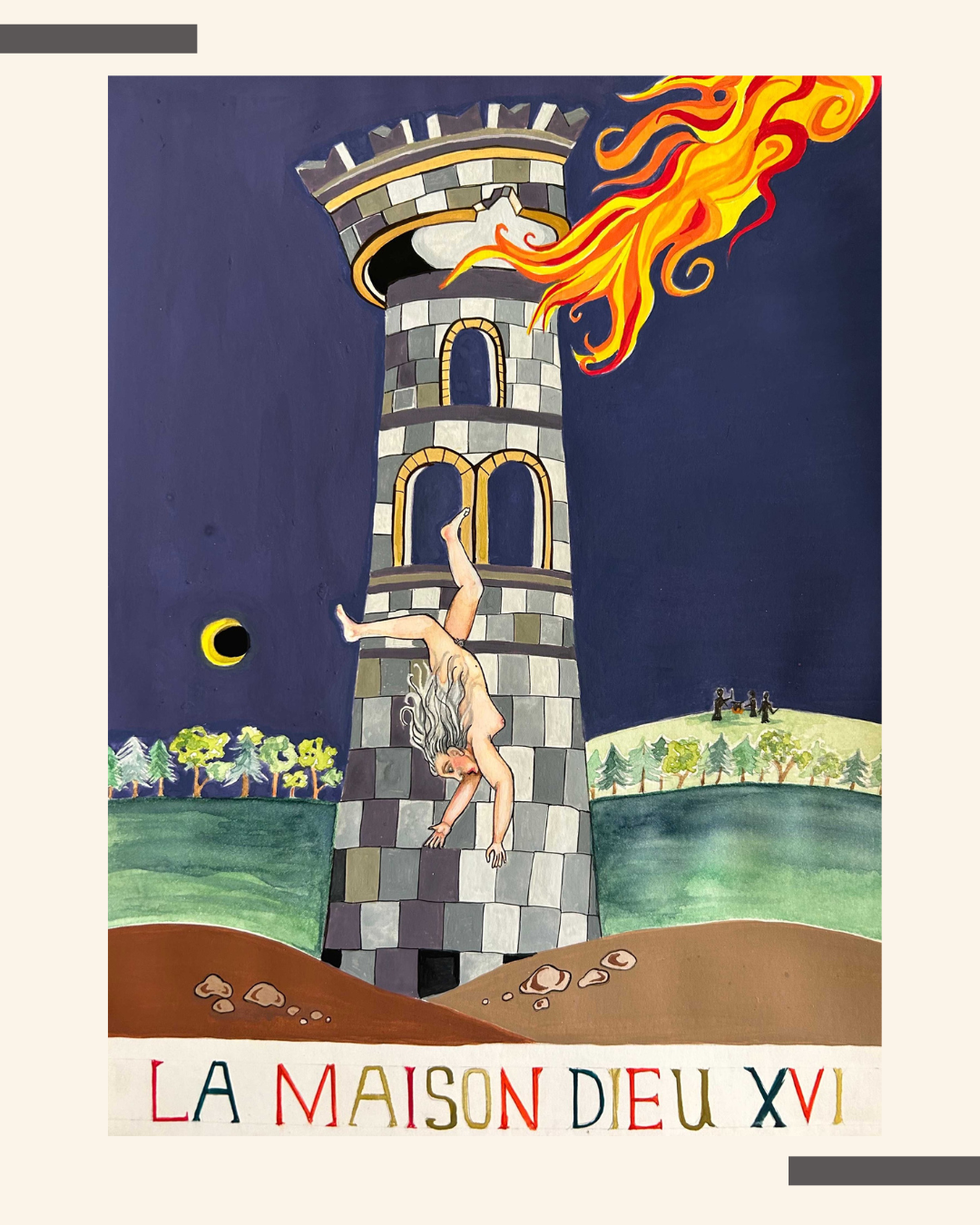
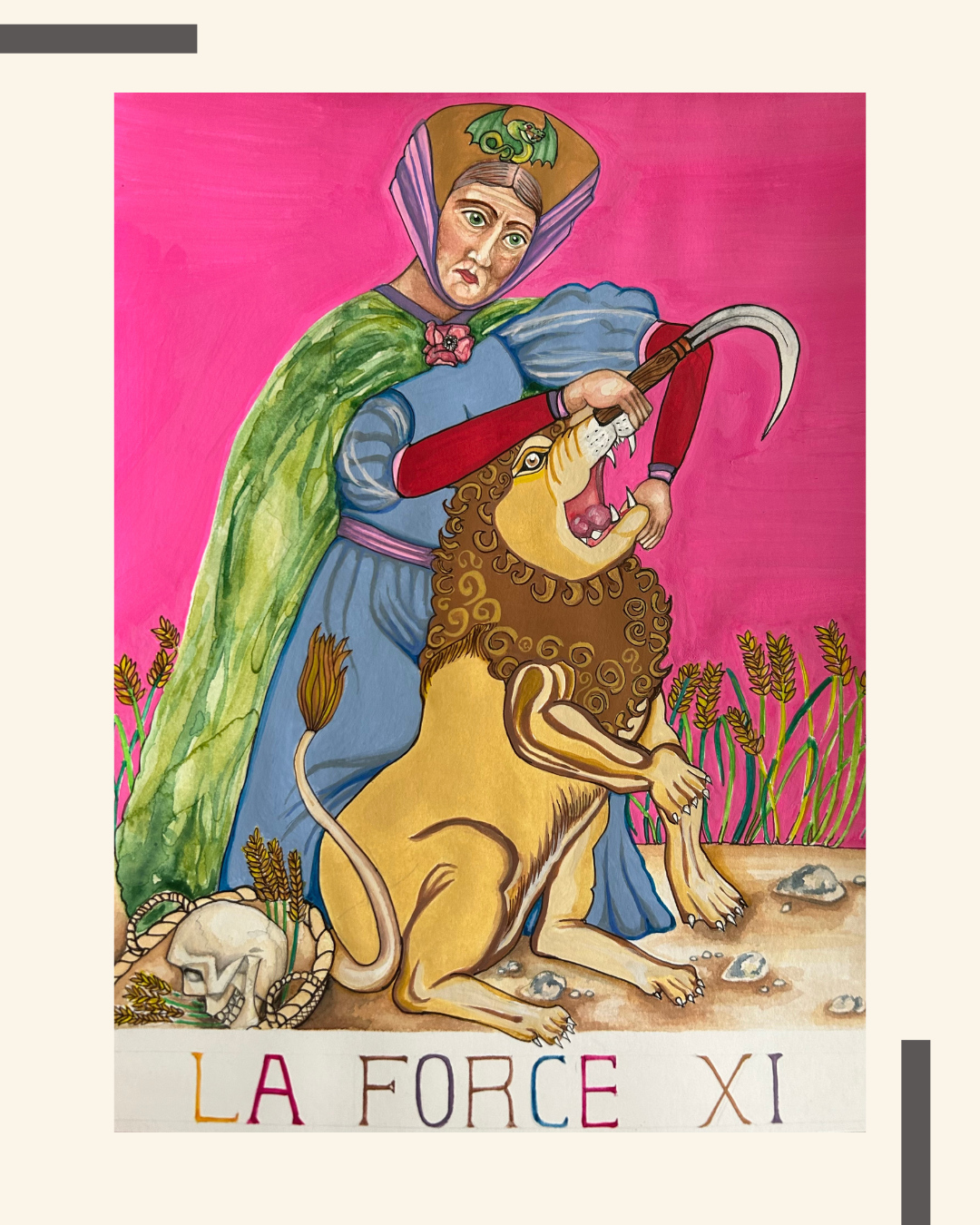
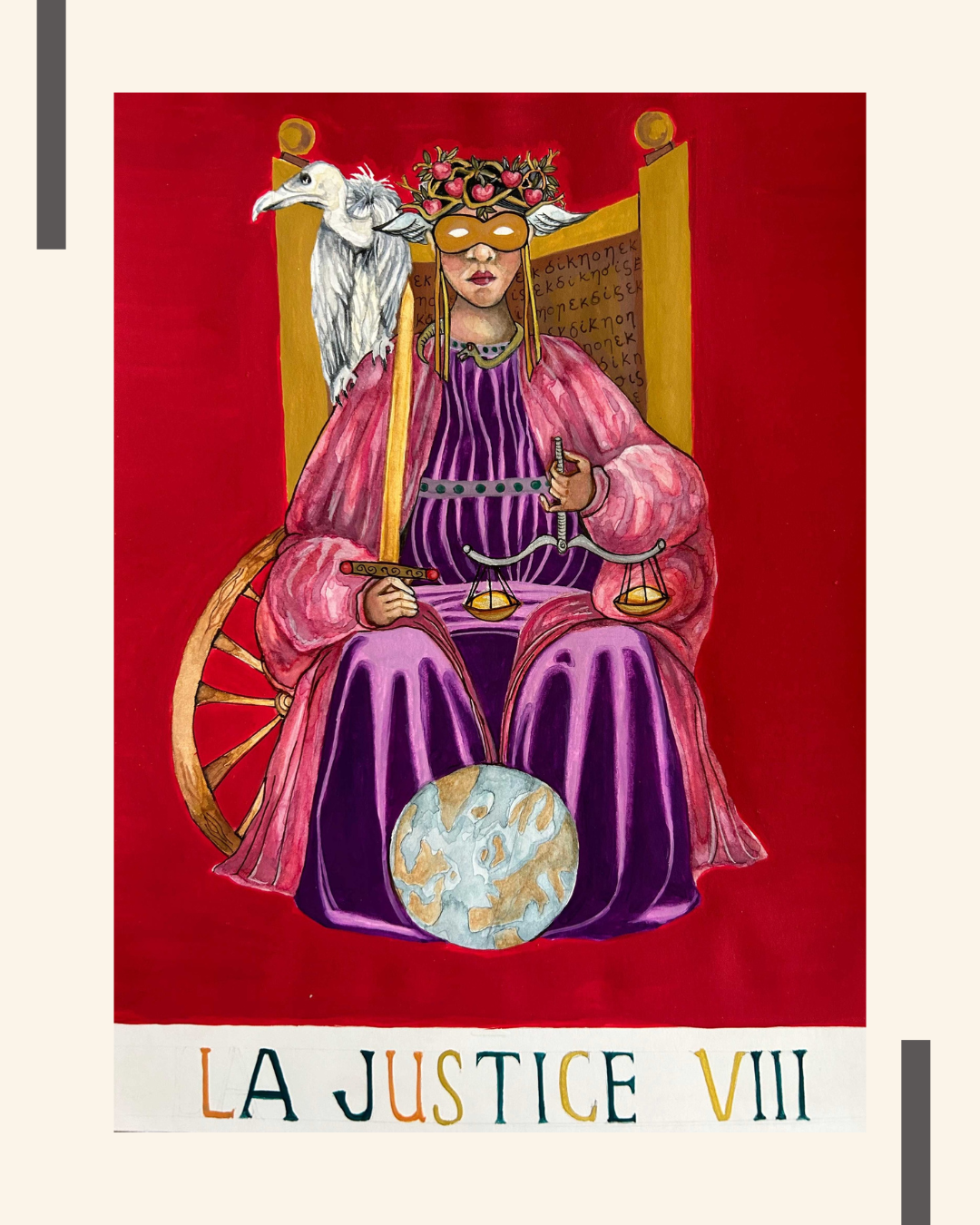
The Tower and its Menopausal Shakespearean Meaning
Shit happens. I’m not talking of those natural organic processes of life where things fall away gracefully or poignantly and all “in due season” as Hesiod would say. I’m speaking of those sudden bolts from the blue — catastrophic, obliterating, so nuclear that one’s core being is shaken to its very foundation and nothing is the same ever again. Trauma, transformation, loss, be it spiritual, physical, material — the kinds of events that mendacious insurance brokers claim are ‘acts of god’. This is The Tower card. The woman falling is Lady Macbeth, the notorious queen from Shakespeare’s bloodiest of plays, Macbeth.
Such a powerful and domineering presence, by the play’s conclusion, Lady Macbeth is reduced to insanity, committing suicide by jumping to her death off her castle battlements to a “cry of women”. When her own child (children ?) died in infancy and her ageing body could sustain no more, she offered to trade her very womanhood itself with demons in order to secure worldly power for herself and her husband — a pact sealed in peri-menopausal blood and soured breastmilk. The Tower asks us to contemplate what we, as women, are willing to sacrifice when chaos reigns, when the very heart of our lives is torn asunder. What will we do to survive, nay, to pick up the pieces and thrive? Yes, this card signals immense change and upheaval but with that comes the chance to choose to be devastated or to be transformed through trial and adversity. Witness our sisters throughout history and today, following behind disaster with mops and buckets in hand, cleaning up the shit not of our making. This is what makes us feared: we can deal with anything man and nature can throw at us. This makes us dangerous for we can survive anything with dignity, grace, intelligence, resilience, ferocity and righteous anger.
Strength and its Menopausal Shakespearean Meaning
In the original Tarot deck, the Strength card features a woman wrestling with a lion, an exhortation to fight against both outer and inner struggles knowing that the outcome can never really be won without some kind of battle scar. In Shakespeare’s play Coriolanus, Volumnia is the hero’s mother, a post-menopausal grandmother pushing her son from battlefield victory to victory until her mercenary drive leads to his death. Think Angela Lansbury in The Manchurian Candidate. Like the emblem of the Roman empire that she so passionately defends, Volumnia is the ‘she-wolf’, the ambitious woman frustrated by the limitations that all patriarchies place upon females, forcing them to channel their talents and live vicariously through their menfolk. She boasts that even if she had a hundred sons, she would rather them all die on the battlefield in honour than live as cowards. Volumnia revels in her son’s wounds and massive body count, claiming that he sucked his valour from her breasts in infancy. In my card, Volumnia is portrayed as the archetypal Devouring Mother: with sickle in hand, like the classical goddess Ceres in her darker aspect, she reaps the bodies of men as if they were no more consequential than wheat stalks. Such is the strength of Mother Nature. As the Wolf Mother, Strength also reminds us of the absolute power of maternal instinct, a force that is bestial, sometimes violent, and always incomparable.
Justice and its Menopausal Shakespearean Meaning
Ah, yes, Justice. In her Greco-Roman incarnation, she is portrayed as blindfolded to represent her supposed impartiality. But we women know that this western notion of institutional justice is bullshit: when has the system ever served the best interest of the weak, the poor, the marginalised, the despised? But in her original guise, Natural Justice, the goddess Themis, had a much different form and reputation. Sometimes portrayed as multiple entities like the Furies or Harpies, or as the singular entity known as Nemesis, Ate, or Tyche, she was the personification of Revenge. Even Zeus, the king of the gods, couldn’t compel or restrain her. Justice (or Revenge, Retribution or Righteous Anger) exacted a brutal vengeance upon those who murdered innocents, pursuing them through life and even after death. Despots and tyrants feared her and sometimes showed compassion to their subjects solely in order to escape Justice’s wrath. Overseer of the universe (yoni-verse), Justice’s vicissitudes connected her with Time and the seasons, hence in my card she is pictured with symbols of the globe, the solar wheel, the vulture, horse’s bridle and her traditional scales. Pulling the Justice card reminds us that sometimes it takes time, perhaps even centuries, before the cosmos rights any wrongs, yet righted they shall be. In Shakespeare’s play Titus Andronicus, the peri-menopausal Queen of the Goths — the dreaded Tamora — devotes the latter stage of her life to pursuing vengeance against the Roman general who sacrifices her son as a spoil of war. Tamora even dresses as Revenge to drive her enemy insane after she has ordered her other sons to rape, murder and mutilate Titus’s daughter and other children. After his family is decimated by Tamora’s vengeance, Titus prays to the goddess Astrea, petitioning her to return to earth to restore her power. Astrea was yet another incarnation of Justice but one connected with the heavenly powers of the newer Olympian gods — not like the chthonic primal, darker forces of the retributive Titans like Nemesis and her ilk. And that is Titus’s fatal error: he prays to a version of Justice that has been on earth all along, but he has been unable to recognise her in her merciless human incarnation as Tamora. Eventually learning Tamora’s brand of justice, Titus makes Tamora unwittingly eat her own sons baked in a meat pie before stabbing her to death. Tamora is a complex character: she charms everyone she meets, is a formidable ruler and warrior, yet she is capable of breathtaking acts of cruelty and savagery, even ordering her infant to be killed lest its appearance reveal her infidelity. Having overstepped the boundaries of natural justice, in the end, Tamora, too, is made to realise that to those who have wronged her, Justice, or whatever we choose to call her, is a complete bitch.
A Crone’s Reading for Medusa Rising
Now for the fun part. Esmée asked that I might pull three Tarot cards from my deck in order to do a reading for the online project of Medusa Rising and its potential success as it expands its mission into the online world. The cards selected in the specific order requested were: The High Priestess, the four of wands, and the Queen of cups. I interpret their message as follows:
Medusa Rising’s guiding matron and inspirational archetype is the veiled Isis and disguised Pope Joan, Woman in her most spiritual and formidably intelligent aspect as the High Priestess of all Mysteries. The cards are favourable to the overall project and mission but indicate a slight preoccupation with deciding the overall approach to realising that vision. I sense that this minor barrier is to do with balancing intellectual ideology and a passionate, emotional response to the state of womanhood as it currently stands. In other words, there seems to be a hesitation, maybe even a slight questioning, as to how to get the balance in tone right for the overall project. It is a conceptual fear of possibly alienating some readers who expect a more removed ideological analysis of issues, at the same time that, conversely, you want to include emotive, creative and experimental responses without the content coming off as ‘flaky’.
The project of Medusa Rising will always be thinking about how it can transform and grow and the cards remind this team of women to always trust their collective intuition and gut feeling in coming to final editorial decisions. The answer is to trust in the power of intuition. There is a reminder to engage with emotions as a legitimate counter-balance to reason, intelligence, and logic in your handling of issues. The cards warn about wasting precious energy that should be redirected towards developing an authentic style and approach to the project. These are challenging times. You can’t please everyone, and sometimes difficult decisions have to be made. The cards speak of the innate powers, talents, and abilities of your readers and contributors. Although getting the project to the state you’d like it to be in might take some time and be occasionally challenging, the cards advise everyone involved to not get so caught up in the minutiae and stressful details of day-to-day operations that the overall importance of the mission and the sheer brilliance of all those involved might get lost sight of. Medusa Rising’s success depends on harvesting the skills, abilities and approaches (even those oppositional or confrontational voices) of many women: difference is strength. The High Priestess will guide, teach and sustain all who come to Her.
Dr V L McMahon has dimensions, as women do. Retired public school educator of the arts. PhD in Shakespeare Studies but unable to find work. Menopausal, proud second-wave socialist feminist. Mother and Grandmother.
Maybe this post moved you? Would you like to dedicate it in the name of an ancestor, sister, sister-friend, lover, daughter? Use Eopsin's Ward to have your dedication added here.
Add your voice to this Gorgon chorous? Visit Contribute.
